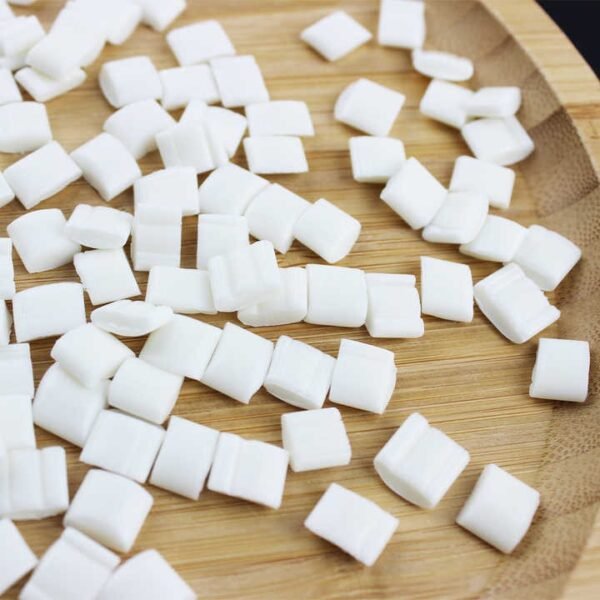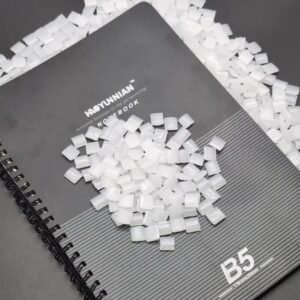Hot melt adhesive for bookbinding
In the fast-paced world of publishing and print finishing, hot melt adhesives (HMAs) have become the backbone of modern bookbinding. Designed to meet the demands of high-speed production, environmental regulations, and diverse material compatibility, these adhesives offer unparalleled performance compared to traditional cold glues. Whether you’re binding paperbacks, hardcovers, or specialty publications, HMAs provide a cost-effective, durable, and eco-conscious solution that aligns with global industry trends.

1. Why Choose Hot melt adhesive for bookbinding?
Hot melt adhesives are thermoplastic polymers applied in molten form (typically between 250°F and 350°F) that solidify within seconds, creating instant bonds. Their advantages over conventional adhesives include:
- Speed: Cure times as fast as 2–25 seconds, enabling production speeds of up to 12,000 books/hour.
- Versatility: Compatible with coated paper, recycled stock, OPP films, and synthetic materials.
- Durability: Withstand temperatures from -20°C to 120°C and humidity up to 90%, ensuring books survive tropical climates and rough handling.
- Sustainability: Low-VOC formulations and recyclable options reduce carbon footprints by 30.78%.
For publishers and printers, HMAs eliminate bottlenecks caused by slow-drying glues while delivering consistent quality across mass-produced and niche publications.
2. Core Product Types and Applications
EVA-Based Hot Melts
Ethylene-Vinyl Acetate (EVA) adhesives dominate the market due to their balance of performance and affordability:
- Spine Gluing: High tack strength (≥8 N/mm²) ensures pages remain intact even under stress.
- Side Gluing: Creates a flexible hinge to protect the spine during frequent opening, ideal for hardcovers and catalogs.
PUR (Polyurethane Reactive) Adhesives
PUR adhesives react with ambient moisture to form unbreakable bonds, offering:
- Lay-Flat Performance: 180° page spreads for art books and manuals.
- Enhanced Flexibility: Resists cracking in low temperature environments.
- Trade-offs: Longer curing times (24–48 hours) and higher costs, offset by reduced adhesive usage.
3. Technical Specifications and Performance Data
| Parameter | EVA (Typical) | PUR | PSA |
|---|---|---|---|
| Viscosity | 3,300–12,000 cps | 8,000–15,000 cps | 5,000–10,000 cps |
| Softening Point | 85°C–95°C | 120°C+ | 80°C–90°C |
| Open Time | 15–25 seconds | 2–5 seconds | Infinite |
| Peel Strength | ≥8 N/mm² | ≥12 N/mm² | ≥6 N/mm² |
| Cost per Ton | 3,000–4,000 | 5,000–6,000 | 4,000–5,000 |
Data sourced from industry leaders like Tex Year and H.B. Fuller.
4. Solving Customer Pain Points
4.1 Production Efficiency Challenges
- Problem: Slow curing times delay workflows.
Solution: EVA adhesives with 15-second open times boost throughput by 30%. - Problem: Stringing and carbon buildup clog machines.
Solution: Closed extrusion nozzle systems reduce waste by 25%.
4.2 Environmental Compliance
- Problem: Traditional glues harm recyclability.
Solution: Tex Year’s Friendly Recycling Certified HMAs separate cleanly during pulping, improving paper reuse rates. - Problem: High VOC emissions.
Solution: Low-density, bio-based formulations (68% renewable content) cut carbon footprints.
4.3 Material Compatibility Issues
- Problem: Adhesive failure on specialty papers.
Solution: HMAs for OPP films and PE-coated stocks ensure 95% bond strength retention.
5. Sustainability-Driven Innovations
Leading manufacturers like Tex Year and Henkel are redefining green bookbinding:
- Bio-Based HMAs: Up to 92% renewable content, certified compostable per DIN standards.
- Low-Temperature Glues: Reduce energy consumption by 20% during application.
- Recyclable Packaging: Compostable adhesives for biodegradable book sleeves align with EU Circular Economy goals.
6. Equipment Compatibility and Best Practices
6.1 Supported Machinery
- Automated Systems: Homag KAL, Biesse Selco (180–200°C glue pots).
- Handheld Units: Leister Variant (±2°C precision).
6.2 Optimization Tips
- Temperature Control: Maintain ±2°C of recommended settings to prevent viscosity fluctuations.
- Maintenance: Weekly tank cleaning reduces carbonized residue by 50%.
- Winter Adjustments: Increase operating temps by 10°C–20°C to counteract crystallization.
7. Cost-Effective Purchasing Strategies
- Bulk Orders: Pallet purchases (40–50 lb boxes) reduce costs by 15%–20%.
- Tiered Pricing: Annual contracts offer 10% discounts and flexible payment terms.
- Free Samples: 1kg trials with engineer support for machine calibration.
8. Customer Success Stories
- Case Study 1: A German publisher reduced spine failure rates by 67% using anti-crystallization EVA glue, saving €120,000 annually.
- Case Study 2: A U.S. comic producer achieved 1.5m drop-test compliance with flexible PUR adhesives.
9. Why Partner with Industry Leaders?
Shanghai Luyao Industry Co., Ltd. and other top suppliers offer:
- Global Logistics: 72-hour delivery from hubs in China, Vietnam, and Poland.
- Custom Formulations: Adjust viscosity (8,000–15,000 cps) for unique production needs.
- Certifications: REACH, ISO 14001, and FDA compliance ensure global market access.













Reviews
There are no reviews yet.